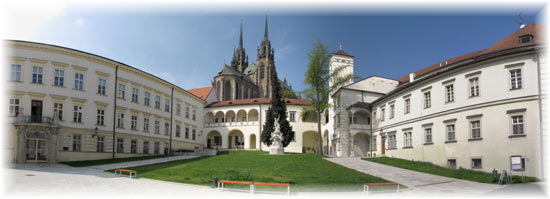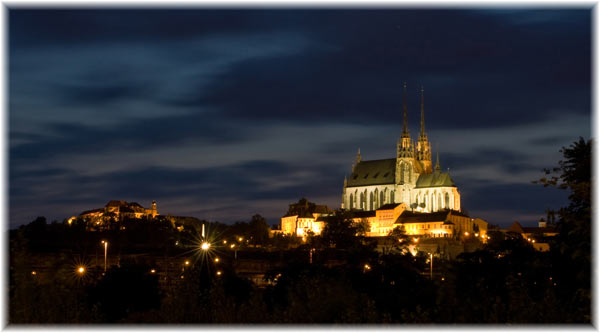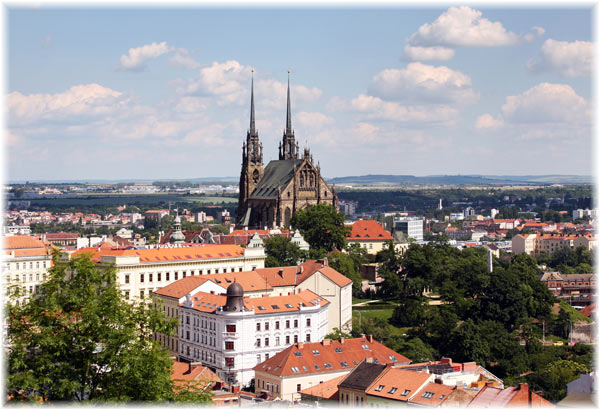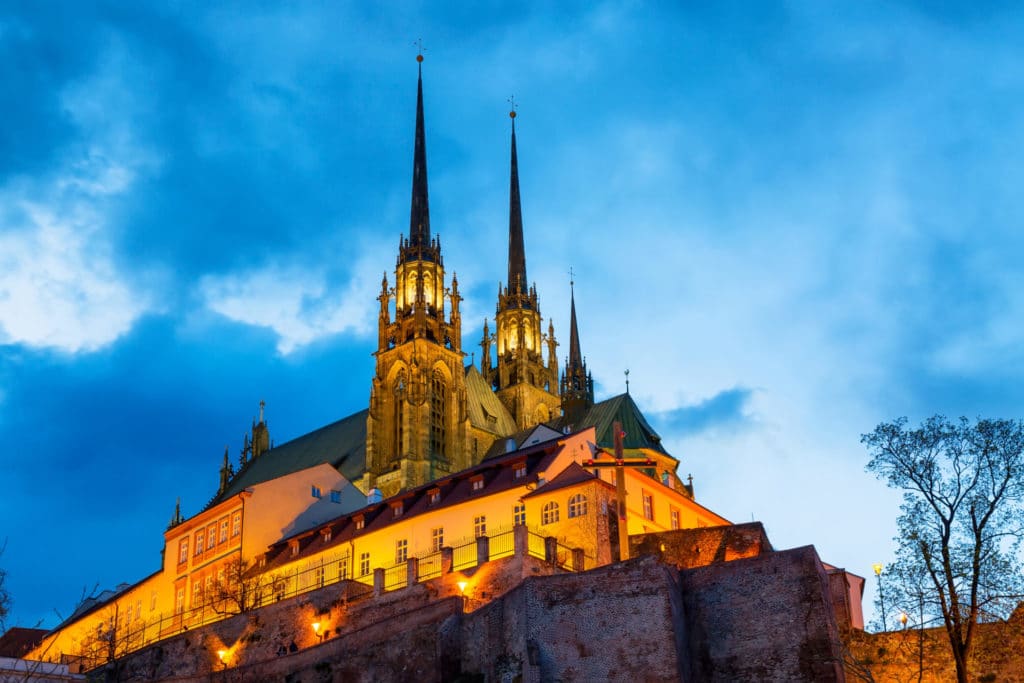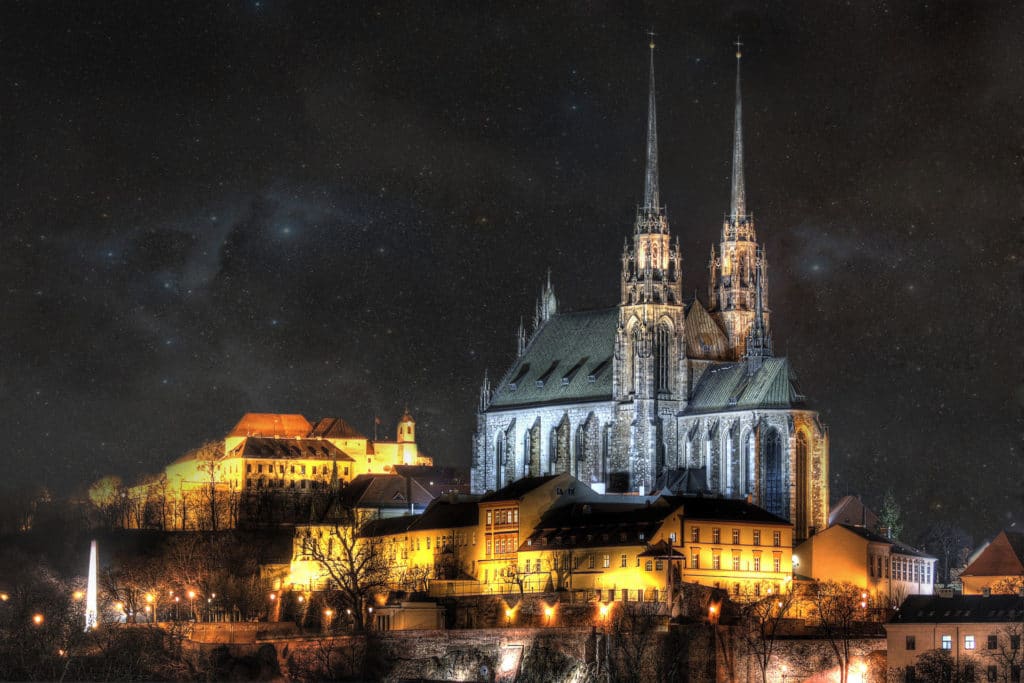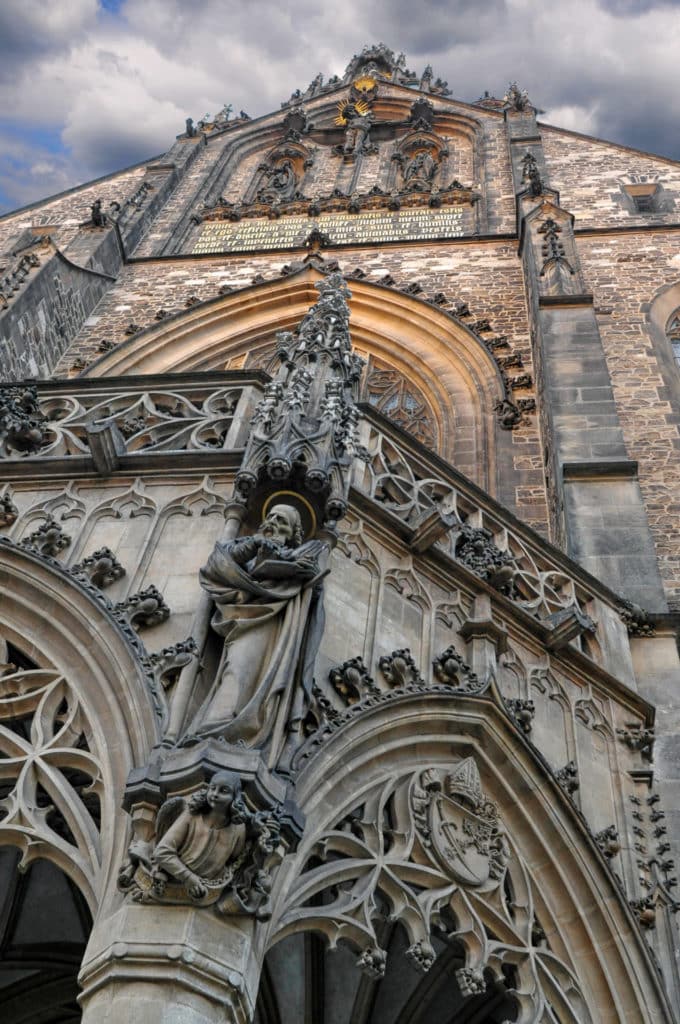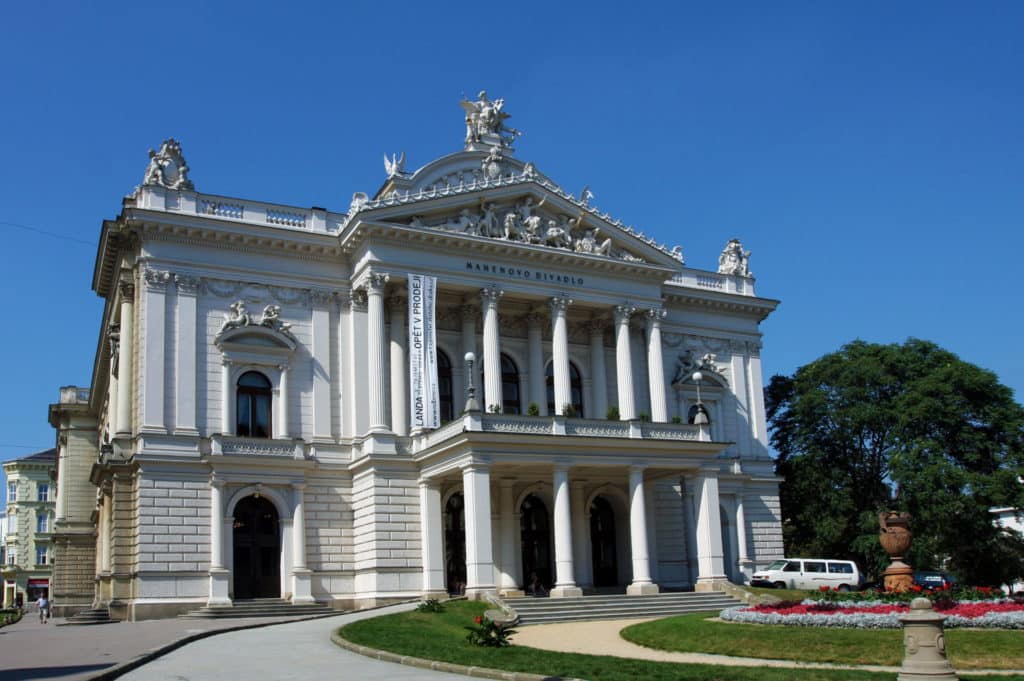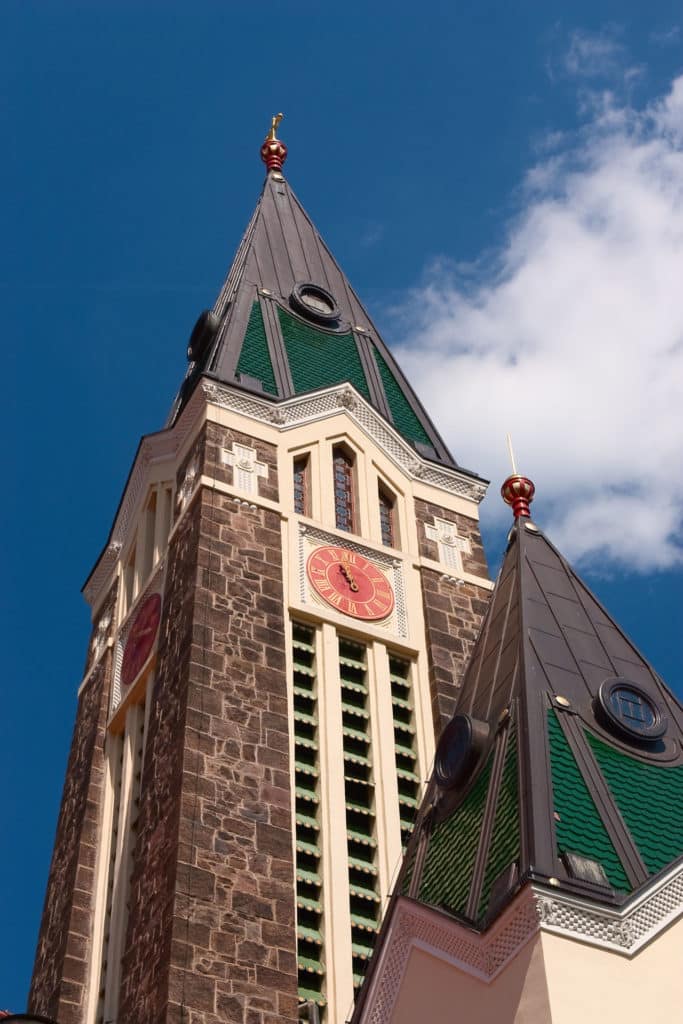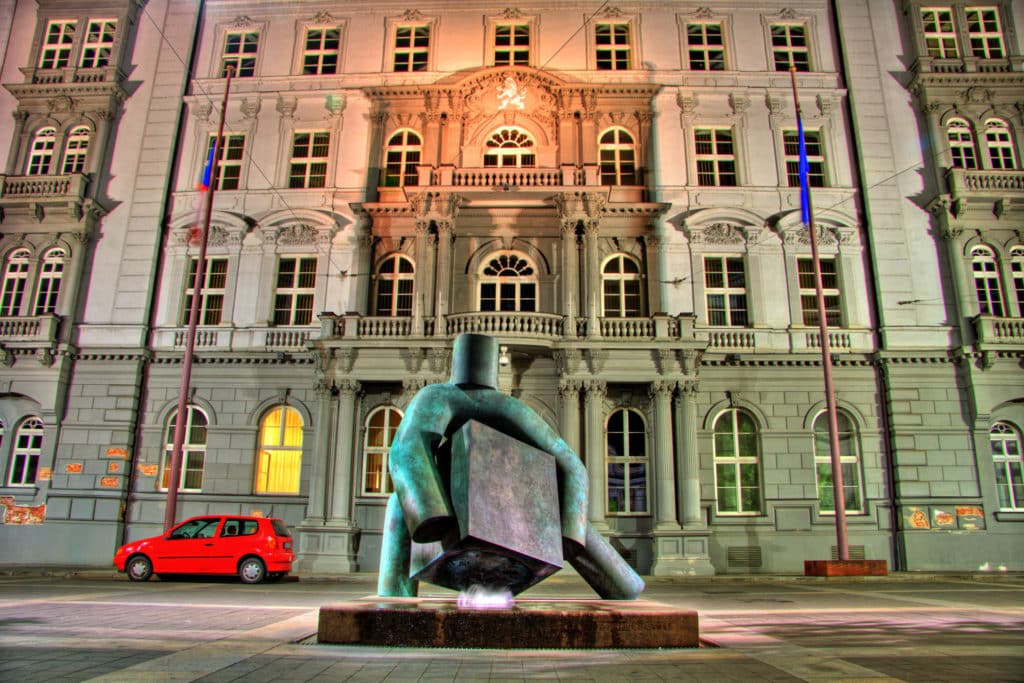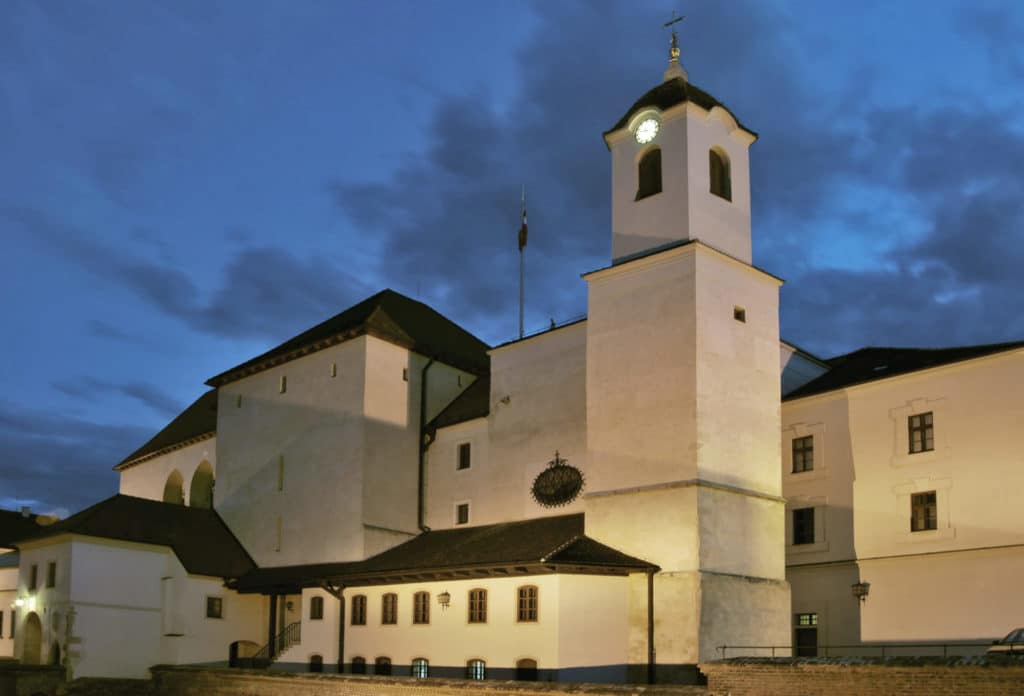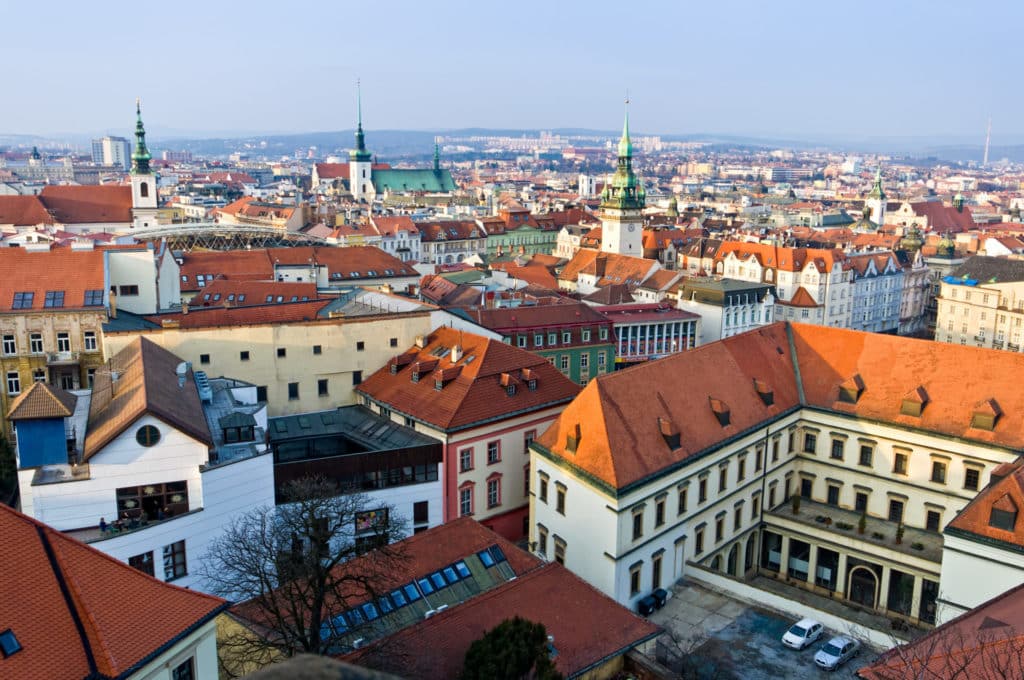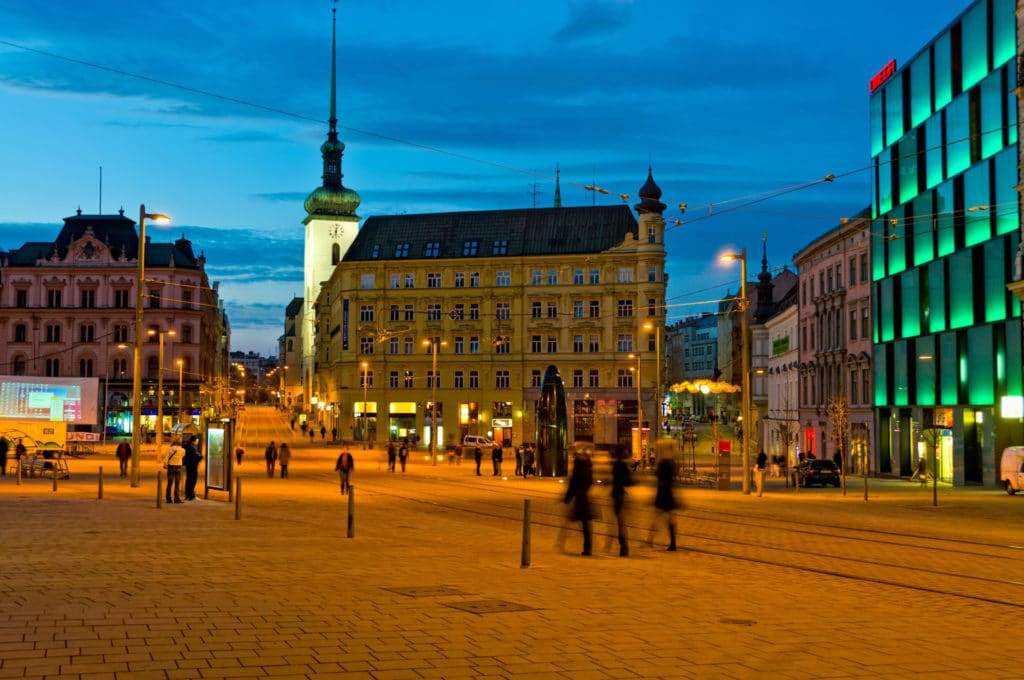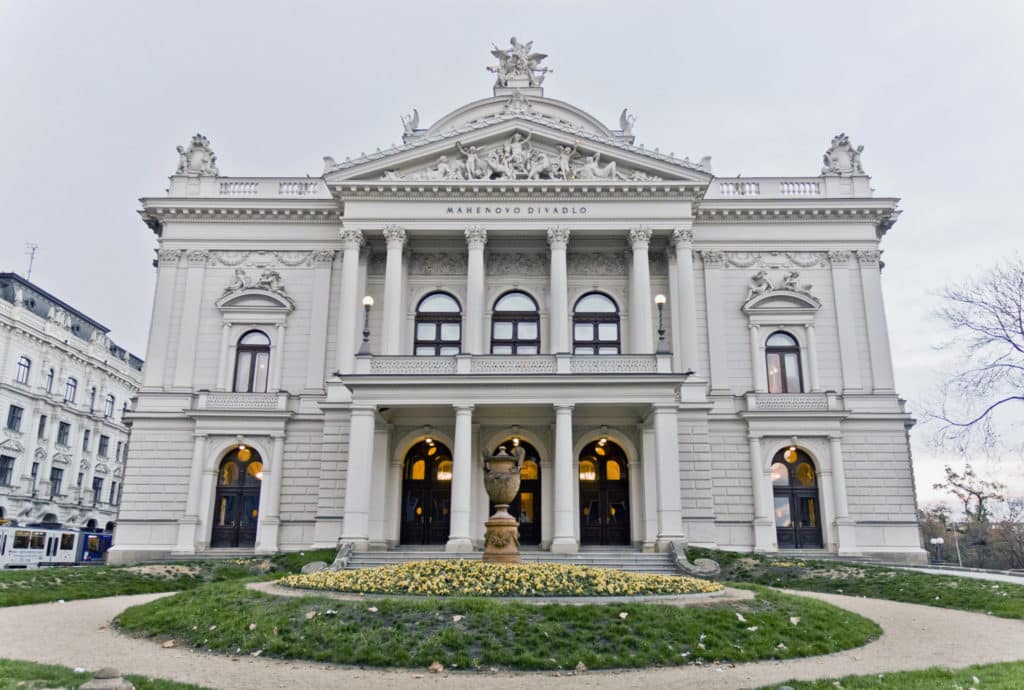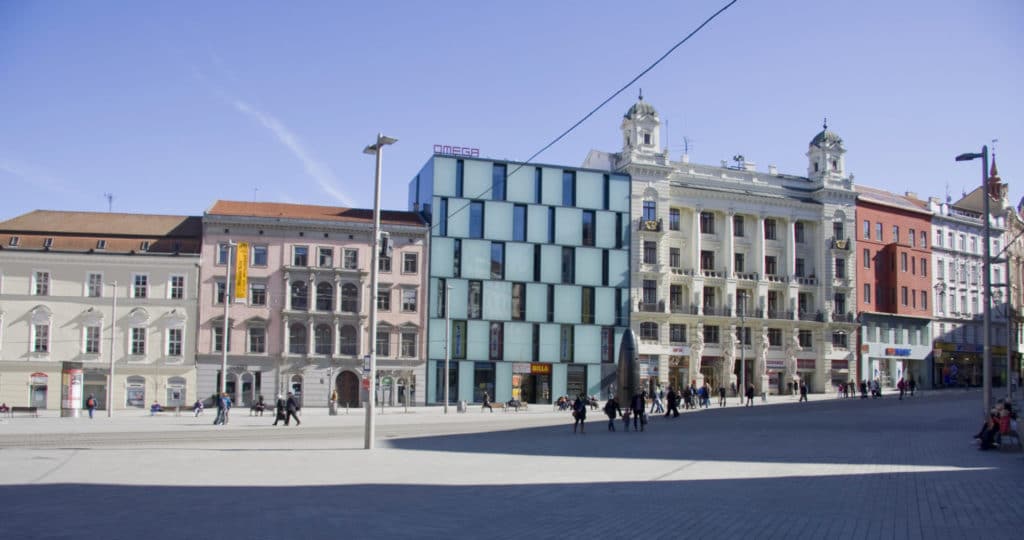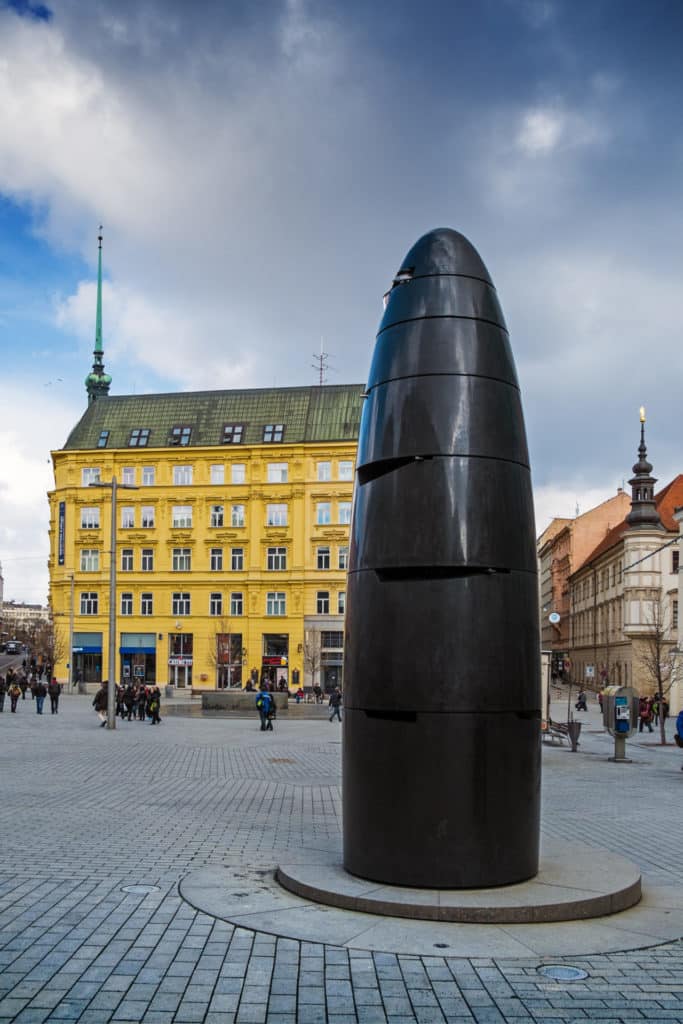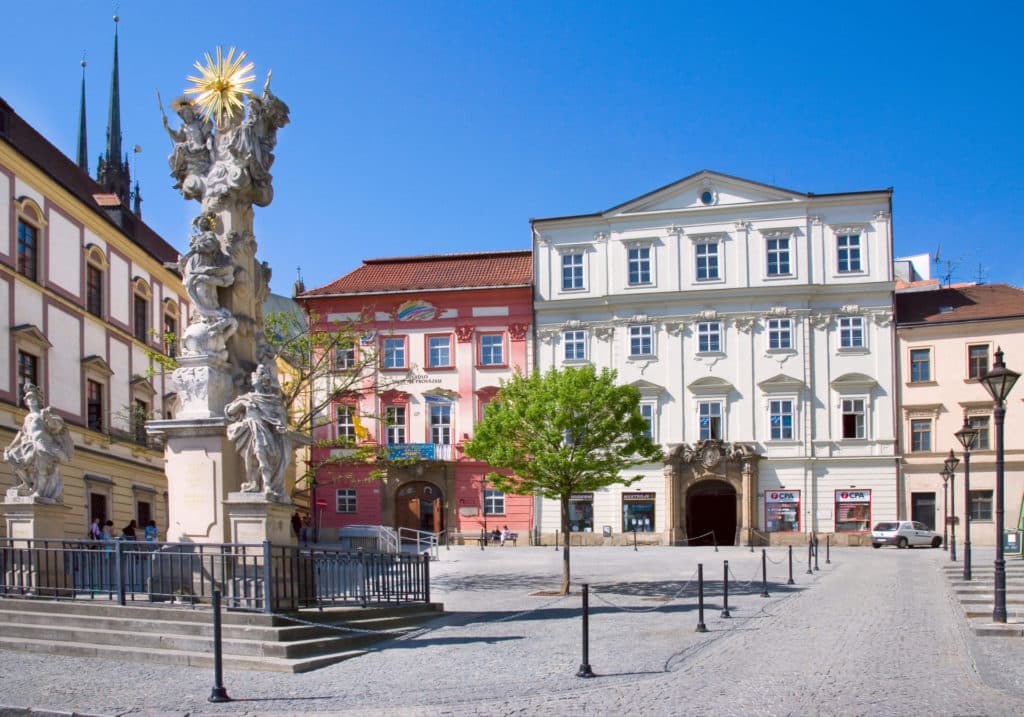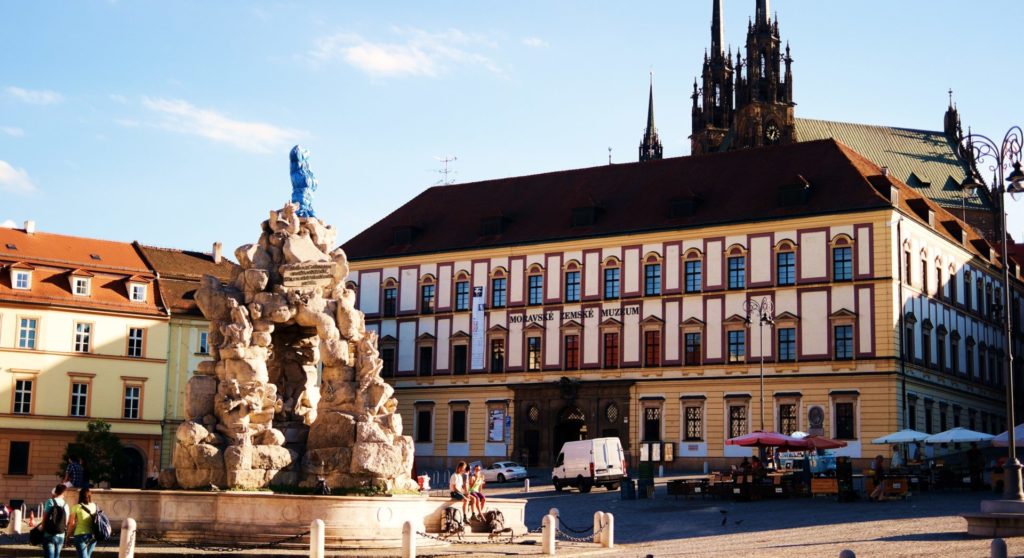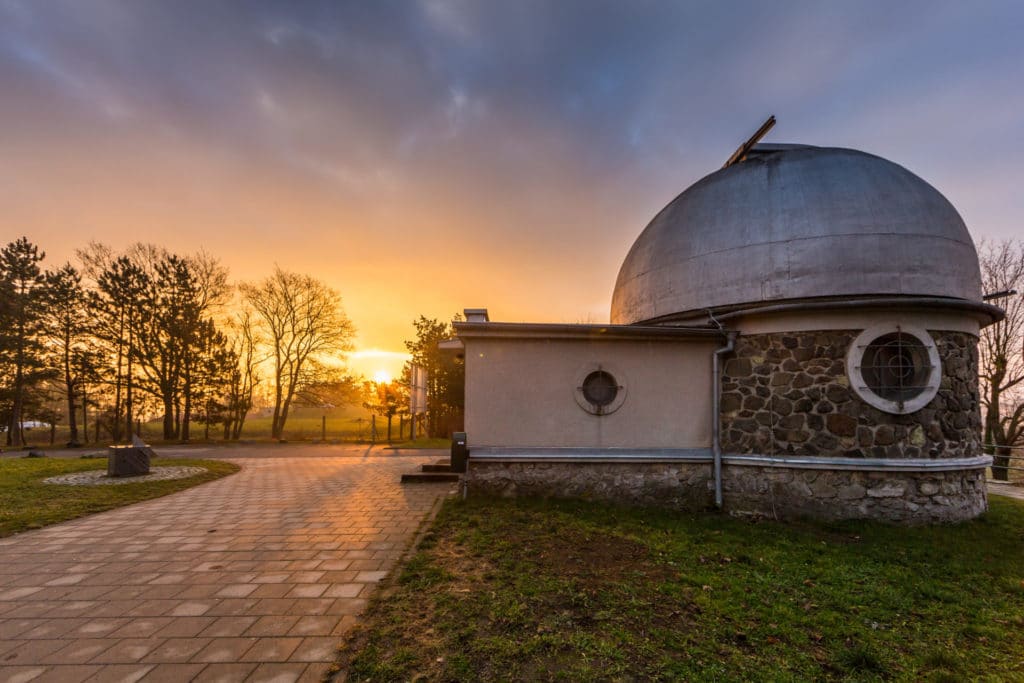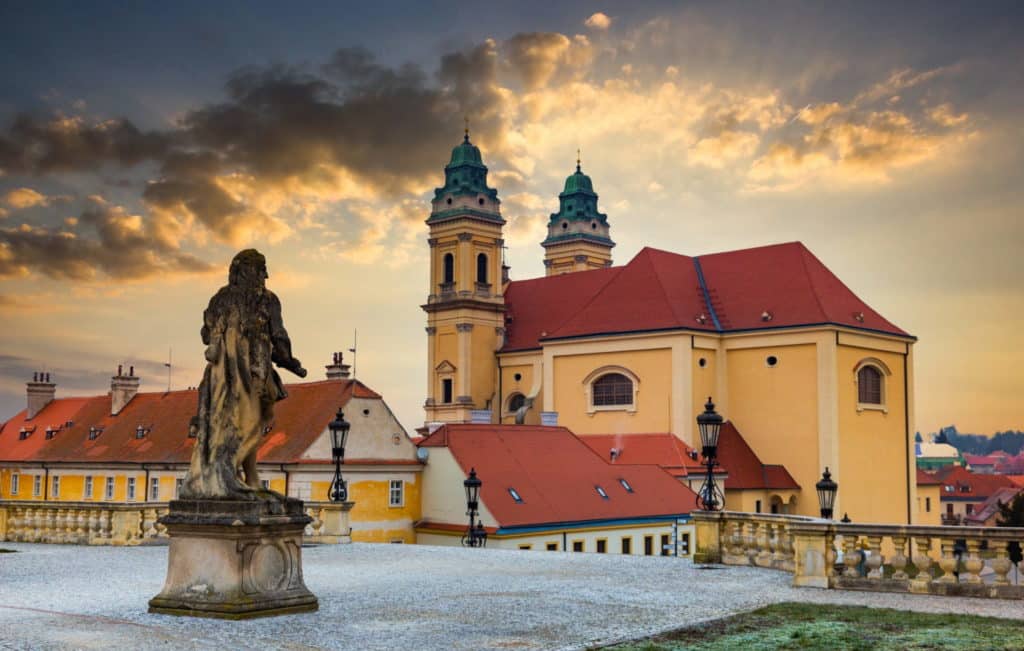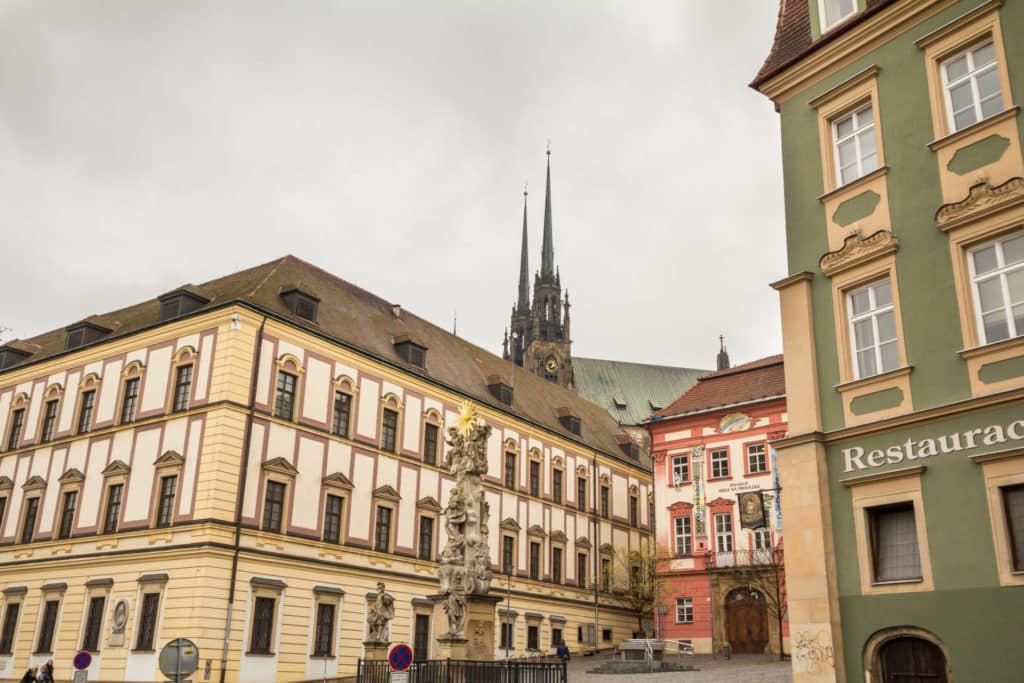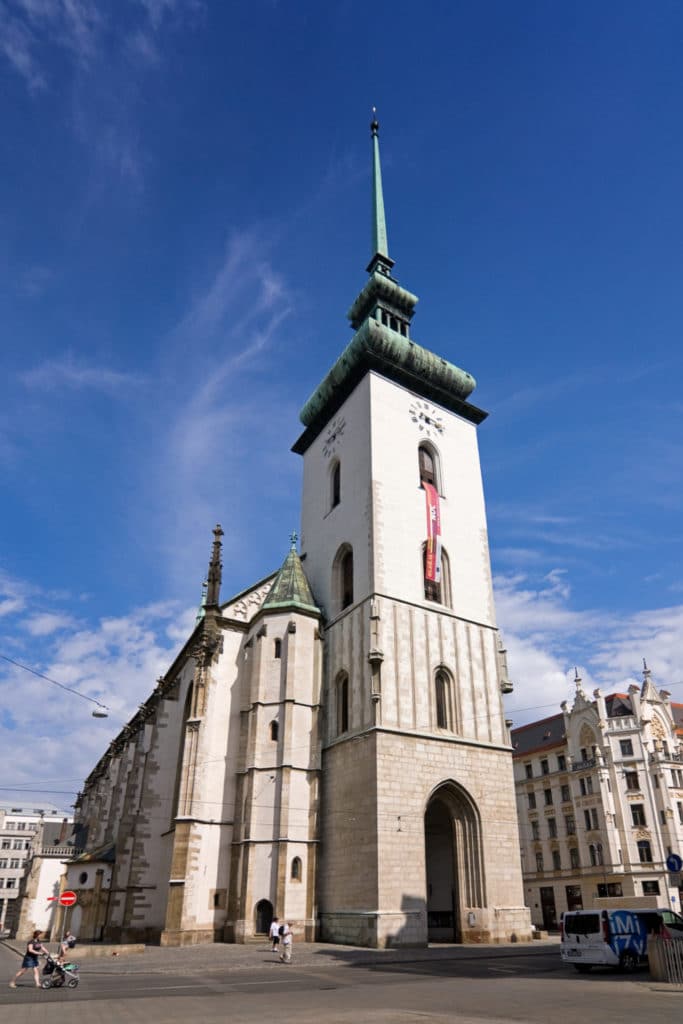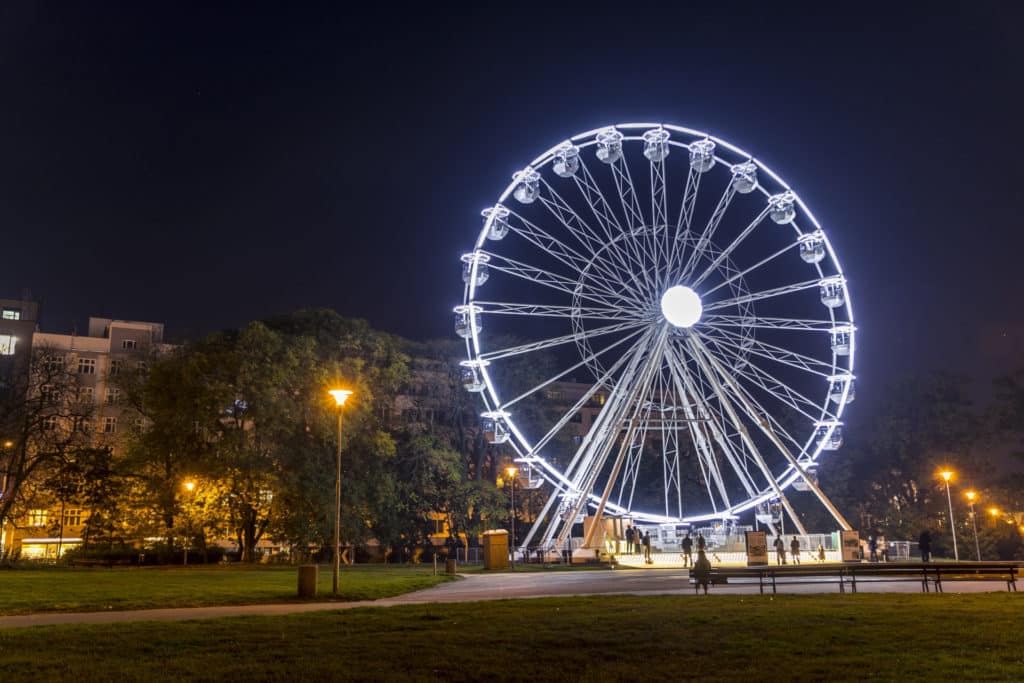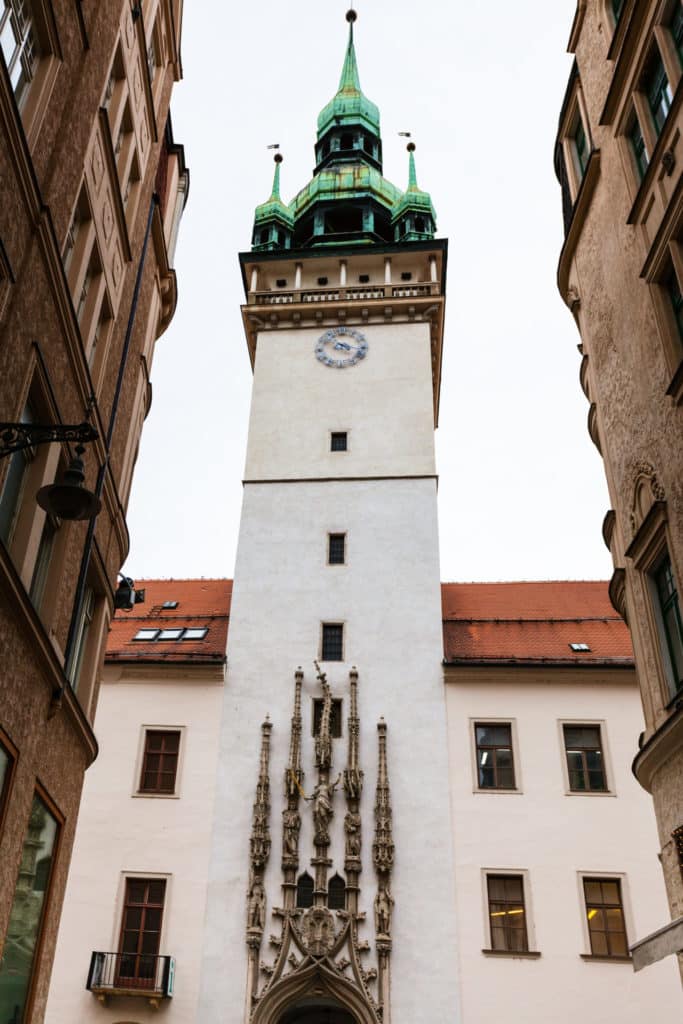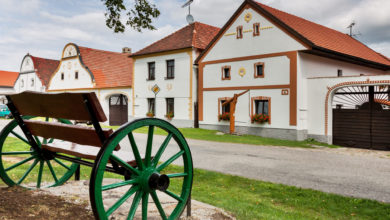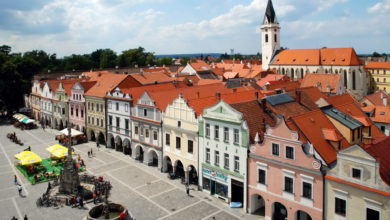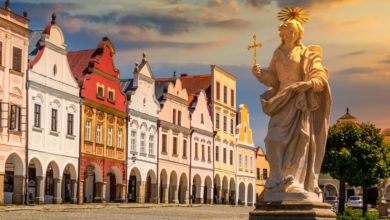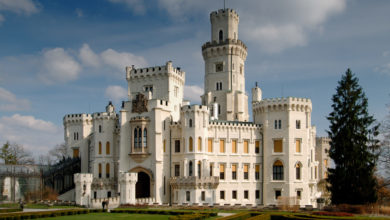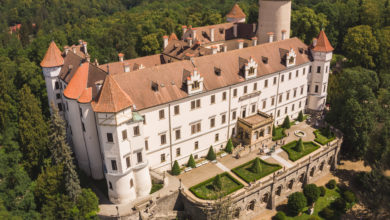Brno
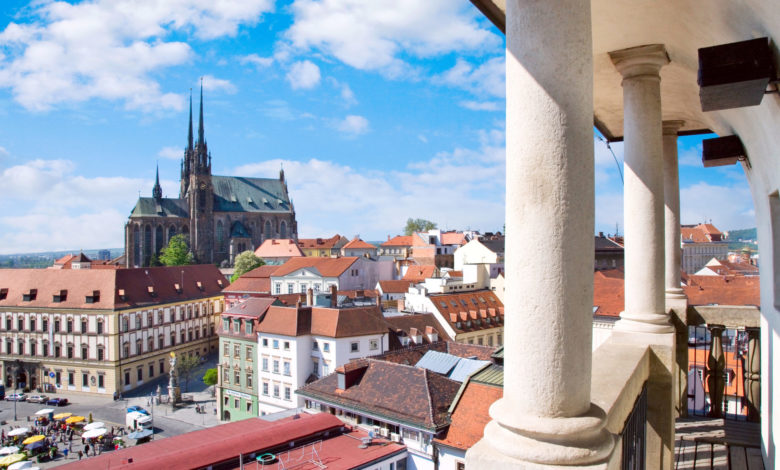
Compared to Prague, Brno is much smaller when it comes to the range of activities and architectural monuments available to visitors. But Brno’s nightlife, especially at weekends, easily rivals Prague’s clubbing scene, when thousands of students and even foreign visitors fill the central cafes, clubs and pubs. There’s also a perfect choice of excellent restaurants and microbreweries. Add to this some museums and the Functionalist Unesco-protected Villa Tugendhat, and you can easily stay two days in Brno without worrying about getting bored.
Špilberk and Petrov are the two hills that characterise Brno: The cathedral sits atop of one, and on top of the other stands the imposing Špilberk castle. Even these days, the solemn fortress can make your spine shiver. While Brno is a bustling industrial heartland, the historical centre is intriguing.
Celts moved to the area 2500 years previously. In the 9th century, Slays constructed a fortress on what, these days, is called Petrov Hill. From the eleventh century, the Margraves of Moravia’s seat was upon this. In 1641, Brno turned into the capital of Moravia, thereby attracting the aggression of the Turks and the Swedes, who caused great harm to the city whilst attempting to take it. Many of the buildings in the baroque style were designed by Mořic Grimm and his brother, the city’s famous architects. In 1861, the destroyed city was substituted for boulevards and parks.
Industrialization, particularly the manufacture of textiles, during the nineteenth century ensured that Brno flourished; it also leant its’ name to a Bren gun, made here originally. By the end of the century, Brno was the 2nd biggest city in all of the Czech Republic, and its’ progressive merchants wanted the city to showcase the newest commercial and industrial designs. During 1928, they produced a massive trade fair network, with its’ ground-breaking styles of architecture; it attracted 1000’s of overseas tourists every year.
The Hill Of Petrov
St. Paul and St Peter’s Cathedral stands on top of Petrov with its’ wiry spires visible from miles away. Following the destruction of the Petrov hill in 1645 by Swedish forces, the cathedral was reconstructed by Mořic Grimm in a baroque style. Next, the outside and whole choir got Gothicized during the early twentieth century. The Archbishop’s Renaissance Palace is adjacent to the cathedral.
Admission: Tower; adult 40 CZK, crypts 20 CZK. Open: 11am-6pm Mon-Sat, from 11.45am Sun. www.katedrala-petrov.cz
The Square Of Zelný Trh (The Cabbage Market)
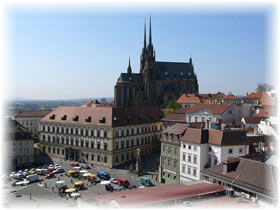
The prized possession of the museum’s prehistoric discoveries is the ‘Venus of Věstonice’, which is 27000 years old and the first ceramic (or fired clay) figure ever found depicting the human form.
Upon departing from the palace, go right and pass through the metal gates to the Bishop Court-yard where the, rather less enthralling, Biskupský dvůr museum is dedicated to Moravian coins and fauna (featuring a record-setting hoard of cicadas). At the bottom of the slope, in the square of Kapucínské, is the undecorated Capuchin Monastery, where one hundred and fifty mummified bodies were placed exposed and clothed in its’ crypt. A macabre sight, but not out of place in the centre of Europe; this practice was halted on the grounds of health in 1784. Within the final room, twenty-four Capuchin monks are lying on the ground, with their heads raised on bricks; some are alarmingly well-conserved after two hundred and fifty years. Visitors can attend a permanent exhibition whose part is a tour of the Capuchin crypt with mummies. Admission: adult 60 CZK. Open: 9am-noon & 1pm-4.30pm May-Sep, closed Mon mid-Feb–Apr & Oct–mid-Dec, closed mid-Dec–mid-Feb. www.kapucini.cz.
Spanning Zelný trh, you can view, from here, the complicated Old Town Hall steeple, appearing like a parade of spiky Ottoman helmets. The Gothic Portal was designed by Anton Pilgram in 1511, who purposefully made the pinnacle at the centre look as if it was about to fall over. Pilgram later decorated the Cathedral of St Stephen’s in Vienna with his carvings. Suspended in the archway entrance is the renowned Brno Dragon, distinguishable as an alligator on a mount; it was offered by a delegation from Turkey to Matthias Corvinus. Brno’s population has a liking for this distinctive gift and the cart-wheel suspended on the walls. Georg Birk, a carpenter, made a bet in 1636 that he would be able to do the wheel from logs and roll this for thirty-five miles (fifty kilometres) from the village he lived to the Brno in a single day. He succeeded in this bet.
Past the Hall of the Old Town is the St Michael Dominican Church of 1655, which features the normal selection of baroque style altar-pieces and statuary, though the carved decor over the pulpit looks as if a bomb’s gone off in heaven. This church is adjacent to the baroque style New Town Hall. Originally, this was the monastery of the Dominicans conceived, in the 1690s, by the Grimm brothers.
Save time by booking quick, comfortable transfers online between Brno and Prague. Click here to check prices.
The Square Of Náměstí Svobody
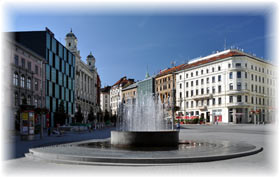
Go on from Centrum to the square of Malinovského, and a nineteenth-century Mahen Theater is there on the left-hand side.
It’s got a grand look, with a splendid drive that sweeps up to the porch’s entrance. The inside is delectable, with stylish staircases, crystal chandeliers, strolling salons for intervals and, naturally, a terraced auditorium that’s gilded heavily, lavish yet personal. This was the 1st theatre in 1882 in Europe to utilize electrical lights.
A different road going away from Svobody-Rašinova brings you to St Jacob’s large Gothic Church, the parish church of Brno, featuring its’ high belfry. Its’ aisles are supported by very slender piers which don’t appear able to hold the weight of this huge structure, even when assisted by a network of precise rib vaults. Such Gothic style is a breath of fresh air after lots of baroque style churches in other parts of Brno. Go an extra block across Rašinova to St Thomas’ Church, structure renown for its’ 3 tier pulpit. Joined onto St. Thomas Church is the eighteenth-century Governor Palace, crafted by the Grimms. From 1992, it’s been home to part of the holdings of the Moravian Gallery. This Gothic hoard’s got many paintings and wooden carvings, like a fifteenth-century panel showing the graphic snake-abundant portrait of Medusa’s head by St Osvald Ruben. There are also some great eighteenth-century pictures by Johann Lucas Kracher, Daniel Gran, Angelica Kauffmann, Franz Anton Maulbertsch and nineteenth-century pictures by Hans Makart and Friedrich Amerling. Admission: adult 60 CZK. Open: 10am-6pm Wed & Fri-Sun, to 7pm Thu. www.moravska-galerie.cz
Near to this palace, on Česká’s corner, you arrive at the Avion Hotel, designed by Bohuslav Fuchs, Bmo’s top architect in the twentieth century.
The Hill Of Špilberk
The Moravian Gallery’s two branches are located on Husova, close to Špilberk. The museum of modern art, situated at Husova eighteen in Pražákův palác, has splendid cubist pictures by Antonín Procházka and Emil Filla. It is also worth going to see for the pictures by Jan Zrzavý.
Near to the palace is the Applied Arts Museum, known as U.P.M., featuring work from historical times to the present. Its’ comprehensive works include early 1st-century Biedermeier furnishings and seventeenth-century glass. After a total change in tastes, the recession brought new life into furniture design and raised restoration standards to an exquisite level of craftsmanship. A few of the Ludwig Mies van der Rohe’s Tugendhat Villa furniture designs are located here.
Špilberk hill faces these museums. The king of Bohemia, Přemysl Otakar the second, constructed a castle here (Špilberk Castle) around 1270. Throughout the Thirty Years War, it got turned into an imposing citadel to imprison political enemies of the Habsburg regime in its’ dungeon. Humiliated by the jail’s fame, the Habsburgs shut it during the 1850s. By 1880 it had opened again as an attraction for tourists. Throughout the occupation of the Nazis, though, the Gestapo saw the fortress as a perfect fit for their aims and lots of victims were tortured, executed and imprisoned here. Tourists are now able to visit the torture chambers and dungeons of Špilberk, and the western area of the castle is presently the city’s museum. There are permanent exhibitions such as The Casemates (with a torture chamber and instruments of torture), Baroque Pharmacy and Lapidary. It is a big climb to the top of the hill to reach the citadel, but views from here are fantastic.
Castle entrance (the combined entry with Brno City Museum): 250 CZK adult, 150 CZK child. Open: 10am-6pm Tue-Sun Jul-Sep, 9am-5pm Tue-Sun May & Jun, 10am-5pm Wed-Sun Apr & Oct; www.spilberk.cz. See the castle website for more information.
Other Places
Museum of Janáček
Most of the compositions of Leoš Janáček were done in Brno, and his home is currently the museum of Janáček. To get to it from Náměstí Svobody, you take Rašinova northwards, then go across Kounicova, to its’ museum.
Výstaviště
Past the town centre is the trade fairground. In 1928, Výstaviště initially laid this out. These grounds hosted a display of the top Czech architects, who were then developing a functional style.
Tugendhat Villa
Another building of importance, the 1930 Tugendhat Villa, the German architect Ludwig Mies van der Rohe, is situated in the čemá Pole suburbs. Its’ striking white villa is ground-breaking for its’ bold designs of ‘free floating’ space. The main aspect of the building is that it was created by covering a steel frame with glass, which had the effect of linking the inside to the outside. Following the owners’ departure in 1938, the Soviets and the Nazis harmed the building badly. Once World War Two was over, it functioned as a dance school and a rehab centre for kids. Restored finally in the nineteen-eighties, the building was pronounced a U.N.E.S.C.O. World Heritage building in 2001. Full restoration started early in 2010. Address: Černopolni 45; www.tugendhat.eu; Admission: adult 300 CZK discounted 180 CZK. Open: 10am-6pm Tue-Sun.
The Summer Pavilion At Mitrovskych
A Freeman named Antonín Arnošt Mitrovský built this Villa at the finish of the eighteenth century adjacent to the Augustinian cloister, in the flamboyant, fashionable baroque style of Louis The Sixteenth. It functioned as an outdoor gambling venue for the Mitrovský Counts.
A plethora of activities in this Villa (1 of its’ events – a grand ball – was attended by the French Emperor, Napoleon Bonaparte). The hall at the centre was adorned with a mural fresco displaying a landscape rich in plant and tree motives.
The Theatre At Mahen
This theatre was constructed from 1881 to 1882 at the former location of Brno’s city walls. The Architectural design of this building combines the styles of the Neo-Baroque, Neo-Classicism and Neo-Renaissance eras. Hermann Hellner and Ferdinand Fellner were amongst the 1st architectural designers of this theatre. The building’s entrance is adorned with the Corinthian and Tuscan sculptures, columns and a Dionysus statue in the centre, standing within a lion and panther-drawn carriage.
This was the 1st theatre on the continent of Europe to be completely equipped with electrical lighting. Thomas Edison himself actually visited Brno to set up and install the electrical lighting.
Brno Underground
Take a 45-minutes tour to explore the underground passages and cellars of the medieval city. Cellars were used during wars as a hiding place for valuable merchandise. Address: Zelný trh 21; Admission: adult 150, discounted 75 CZK. Open: 9am- 6pm Tue-Sun.
Brno’s Masaryk Race-track (Grand Prix)
This world-class motorcycle and the race-car track is the venue for the renowned Czech Republic International Grand Prix (auto racing) and the Czech Republic Grand Prize (motorcycle racing). The track has a capacity of 155,000 spectators and is 5,934 metres long, with 14 curves and an elevation of 74 metres. The Brno Autodrome-Masaryk Race-track is located in Kývalek, 16km west of the city centre.
Tourist Information Centre
Stop here for free maps of the city and other leaflets. Address: Radnická 8, Old Town Hall; www.ticbrno.cz. Open: 8am-6pm Mon-Fri, 9am-5.30pm Sat & Sun Apr-Sep, to 5pm Sat, to 3pm Sun Oct-Mar.
Brno Is the Hub Between Prague, Vienna and Bratislava
Brno is only 2.5 hours from Prague by bus or two hours by car. Brno lies in the central part of Europe, and within a two hundred-kilometre radius, there are other important European capitals like Prague, Vienna and Bratislava. Brno has the international Brno airport, which offers regular flights to and from other EU cities.
Brno has several universities and important judiciary institutions. Brno has the Constitutional Court of the Czech Republic, Supreme Court, and Supreme Prosecutor’s Office.
Travelling to Brno
On the train
Brno’s a significant rail junction located on the Balkan to Budapest to Prague to Berlin to Scandinavia railway journey. Brno is a stop for all of the Euro-city trains. The journey from Brno to Prague is 256 km, from Brno to Vienna 155 km, from Brno to Bratislava 132 km, from Brno to Berlin 566 km and from Brno to Wroclaw 312 km. The central train station is situated in Brno’s centre, a short stroll from the historical centre. You can look for train connections at this website: http://jizdnirady.idnes.cz
Flying to Brno
Brno-Tuřany is the name of Brno’s own international Airport, and this is frequently serviced by flights travelling from Stansted in London, Gerona in Barcelona and Vnukovo in Moscow. Domestic flight options also provide a route to Prague. To reach Brno’s Central bus and train station, it’s best to utilize the bus that leaves the airport each quarter of an hour.
Travelling in a car
Brno is reachable from the D1 highway out of Prague (210 km) or from the D2 highway from Bratislava (137 km).
Travelling in a bus
There are bus services that travel to Brno, for example, the Student Agency. Brno’s got a great link with Prague, and the buses show up at 30-minute intervals. The Bus timetables can be viewed at the website: www.idos.cz
Nearby attractions
Visit Chateau Slavkov and the Peace Cairn, where the Battle of Austerlitz took place in 1805, or the nearby caves of Moravian Karst.

